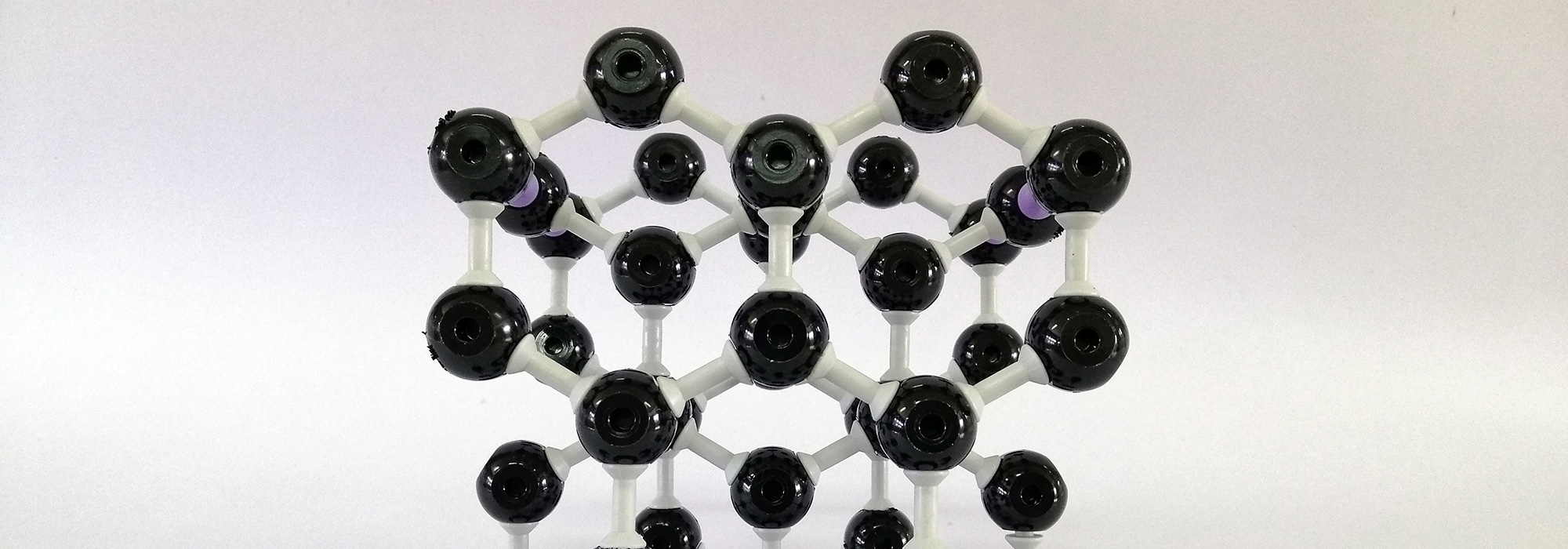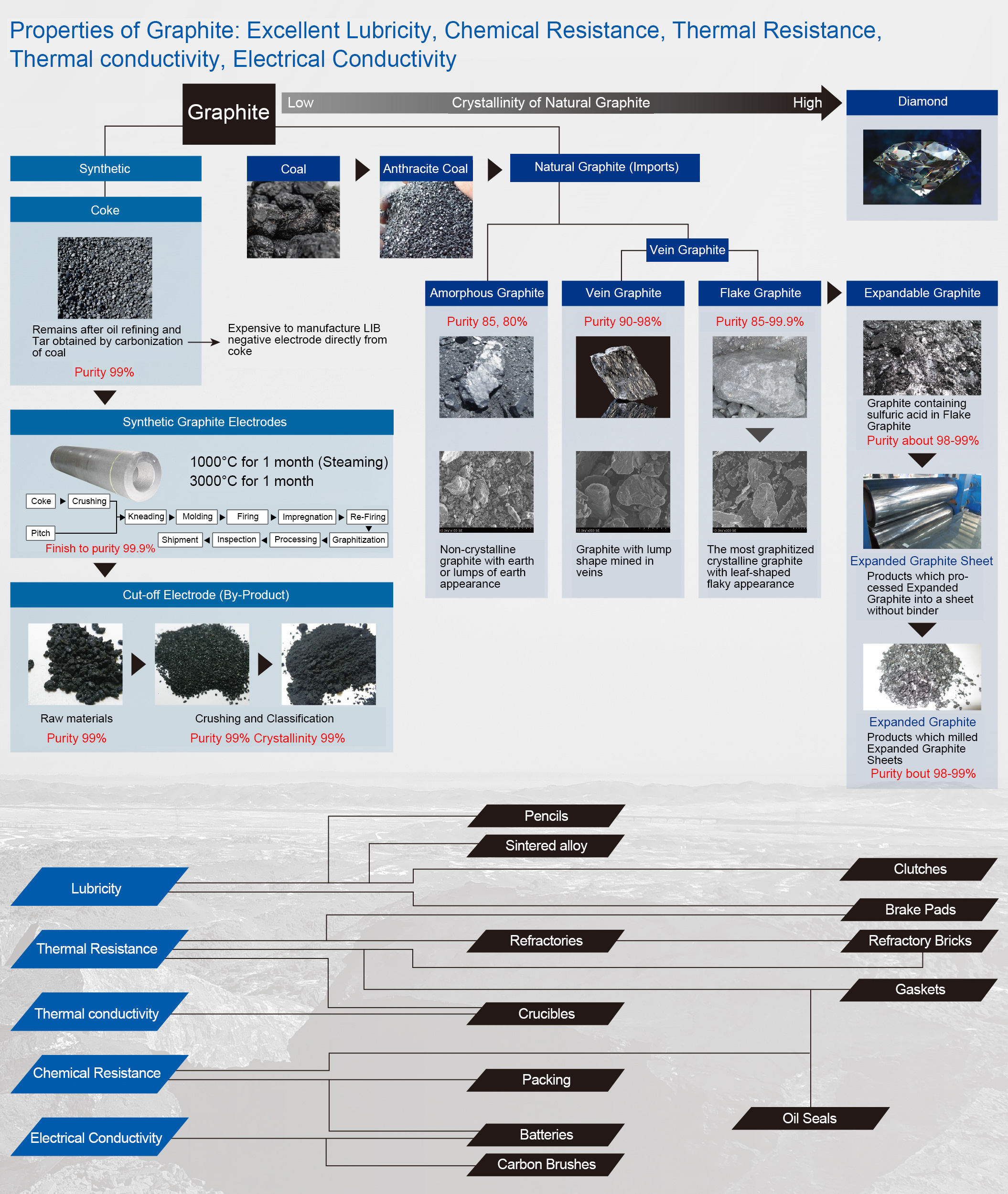

Types of Graphite
Types of Graphite
Graphite is roughly classified into Natural Graphite and Synthetic Graphite. Natural Graphite is classified into Amorphous Graphite, Flake Graphite, Vein Graphite, and Semi-Vein Graphite.
Amorphous Graphite is non-crystalline graphite with earth or lumps of earth appearance.Flake Graphite is the most graphitized crystalline graphite with leaf-shaped flaky appearance.
Vein graphite is mined from veins and is called Vein Graphite because of its lump shape.
Semi-Vein Graphite is intermediate Graphite between Vein Graphite and Amorphous Graphite, and is also called crystalline graphite, and the ore is mined in black lump shapes.
Expandable Graphite and Spheroidal Graphite are produced by specially processed with Flake graphite as raw material.
Classification of Graphite
Graphene
Graphene is an allotrope of carbon consisting of one layer of atoms. It had long been known as based material for carbon nanotubes (CNT) and fullerenes (C60), but a group at the University of Manchester in the UK in 2004 developed a method to take off a single layer, and showed that a practical material. At the same time, it has been clarified that it has extremely high charge mobility, and it is expected to be a post-silicon electronic material. In addition to its peculiar electronic structure, it has many properties that cannot be obtained with other materials such as high mechanical strength and high stability. Since it is a pure carbon material, it has excellent abundance of resources and safety, and has high potential. Strictly speaking, Graphene is a single layer of graphite, but ultra-thin graphite made up to about 10 layers is called “Few-Layer Graphene” and is often simply called Graphene. Graphene produced from natural graphite is considered difficult to industrialize, but we are working with research institutes to develop raw material to produce Graphene easily.
Carbon Fiber Recycled Products

Our CF (Properties of Carbon Fiber Products)
The carbon fiber we provide is recycled products. We manufacture the recycled products in domestic controlled conditions. Our recycled raw materials are limited to Toray’s high-quality product TORAYCAIR such as CFRP used in aircraft, and we are improving the stability and quality of our recycled products.
Recycling Method
For recycling, discard CFRP is fired at high temperature. Unnecessary resin components are removed by heat, and only CF (carbon defiber) is extracted. In the firing process, there are two step processes which change controlling of temperature. Therefore, both the quality and price are different between the primary firing products and the secondary firing products.
Recycled Product Lineup
| System | Product Name | Processing | Fiber Length | Fiber Diameter | Purity |
| PAN system | T800S | Primary firing | About 3 to 80 mm | About 7μm | About 85% |
| PAN system | T800S | Secondary firing | About 3 to 80 mm | About 7μm | About 95% |
Main Physical Properties
| Item | PAN Virgin | PAN Recycling |
| Tensile strength (MPa) | 5880 | 4700 |
| Tensile modulus (GPa) | 294 | Equivalent to PAN Virgin |
| True specific gravity (g/cm3) | 1.8 | Equivalent to PAN Virgin |
| Electrical resistivity (Om) | 2×10 *-5 | Equivalent to PAN Virgin |
| Thermal conductivity (W/mK) | 12 | Equivalent to PAN Virgin |
CNT
Carbon nanotubes (CNT) are the product that a Hexagon carbon network (Graphene Sheet) made by carbon atoms is formed to be a single or multi walled coaxial tubular. In recent years, the use of carbon nanotubes is expanding as applications to improve the electrical and thermal conductivity. We are developing and studying CNT with excellent additive ability to each resin while actually conducting various resin compound tests.



